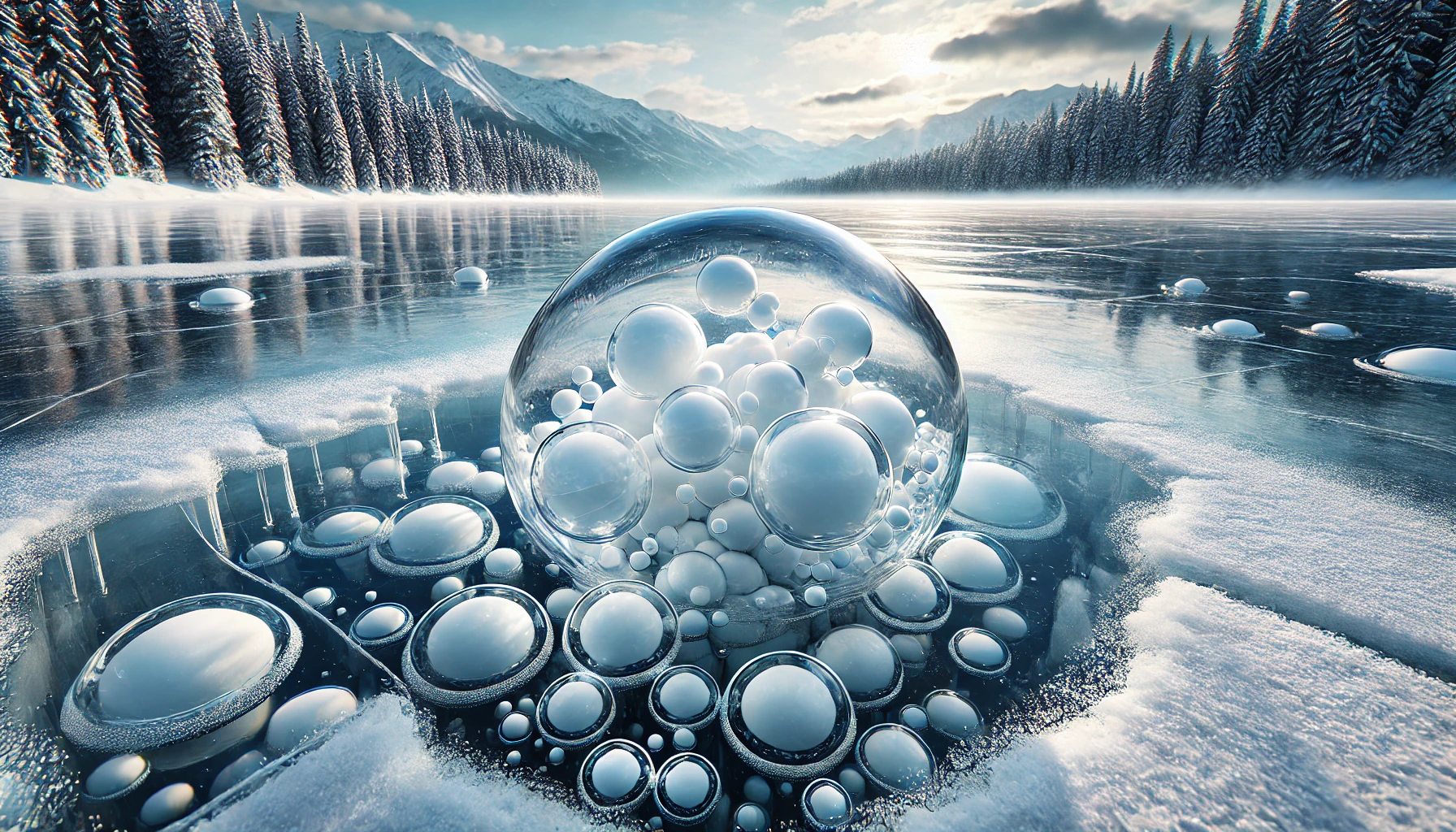Frozen bubbles in lakes are one of nature’s most mesmerizing phenomena. These icy orbs trapped beneath the surface create a surreal and otherworldly sight that captivates photographers, nature enthusiasts, and scientists alike. Here’s everything you need to know about these fascinating formations.
What Are Frozen Bubbles?
Frozen bubbles are pockets of methane gas trapped in layers of ice. They form when organic material at the bottom of a lake decomposes, releasing methane gas. As the gas rises, freezing temperatures cause the bubbles to become encased in ice, creating stunning patterns.
Where Can You See Frozen Bubbles?
Some of the best locations to witness this phenomenon include:
- Lake Abraham, Canada
- Known for its crystal-clear ice and spectacular frozen bubbles.
- Lake Baikal, Russia
- The world’s deepest freshwater lake offers an unparalleled display of methane bubbles.
- Lüttensee, Germany
- A smaller lake with beautiful bubble formations in winter.
- Vermilion Lakes, Canada
- Close to Lake Louise, it provides accessible and picturesque views.
When Do Frozen Bubbles Form?
The best time to see frozen bubbles is during the winter months when the lake surface is completely frozen. December to February is typically ideal in colder regions.
How Are Frozen Bubbles Formed?
- Decomposition: Organic matter like dead plants and animals decomposes at the bottom of the lake, producing methane gas.
- Gas Release: Methane rises to the surface in the form of bubbles.
- Freezing Process: As temperatures drop, the bubbles become trapped in layers of ice, creating beautiful patterns.
Why Are Frozen Bubbles Important?
- Climate Insights: Methane is a potent greenhouse gas. Studying these bubbles helps scientists understand methane emissions and their impact on climate change.
- Tourism and Photography: These natural wonders attract visitors and photographers from around the globe, boosting local economies.
Safety Tips for Visiting Frozen Lakes
- Check Ice Thickness: Ensure the ice is at least 4 inches thick before venturing out.
- Wear Proper Gear: Dress warmly and wear ice cleats for traction.
- Avoid Open Water: Stay clear of areas with visible water or thin ice.
Capturing the Perfect Photo
- Use a wide-angle lens to capture the vastness of the ice.
- Position the camera close to the ice surface for detailed shots of the bubbles.
- Shoot during sunrise or sunset for a dramatic effect.
Frozen bubbles in lakes are not just a visual treat but also a testament to the incredible processes of nature. Whether you’re an adventurer, a photographer, or a science enthusiast, witnessing this phenomenon is sure to leave you in awe.


3 thoughts on “Frozen Bubbles in Lakes: Nature’s Icy Masterpieces”